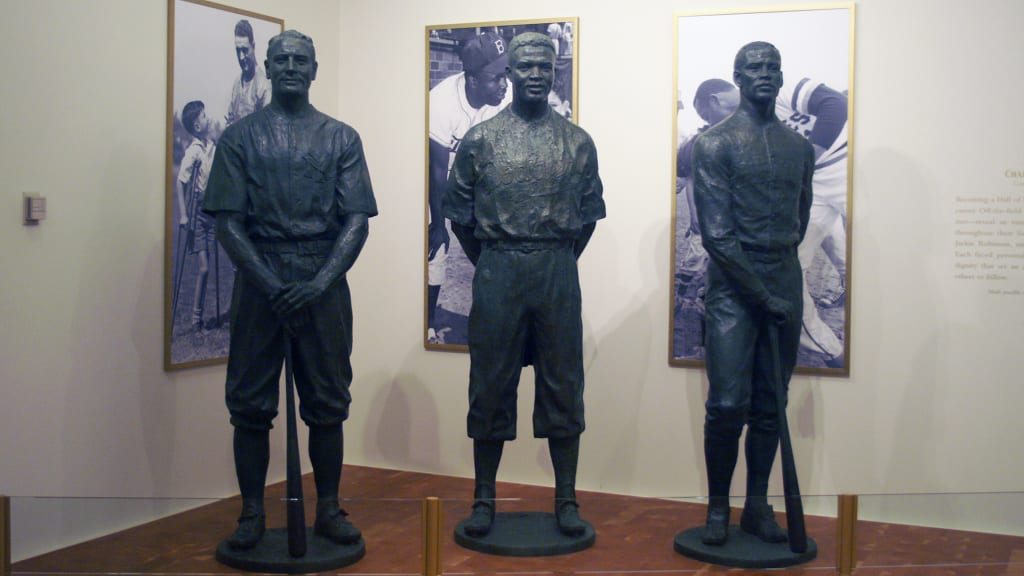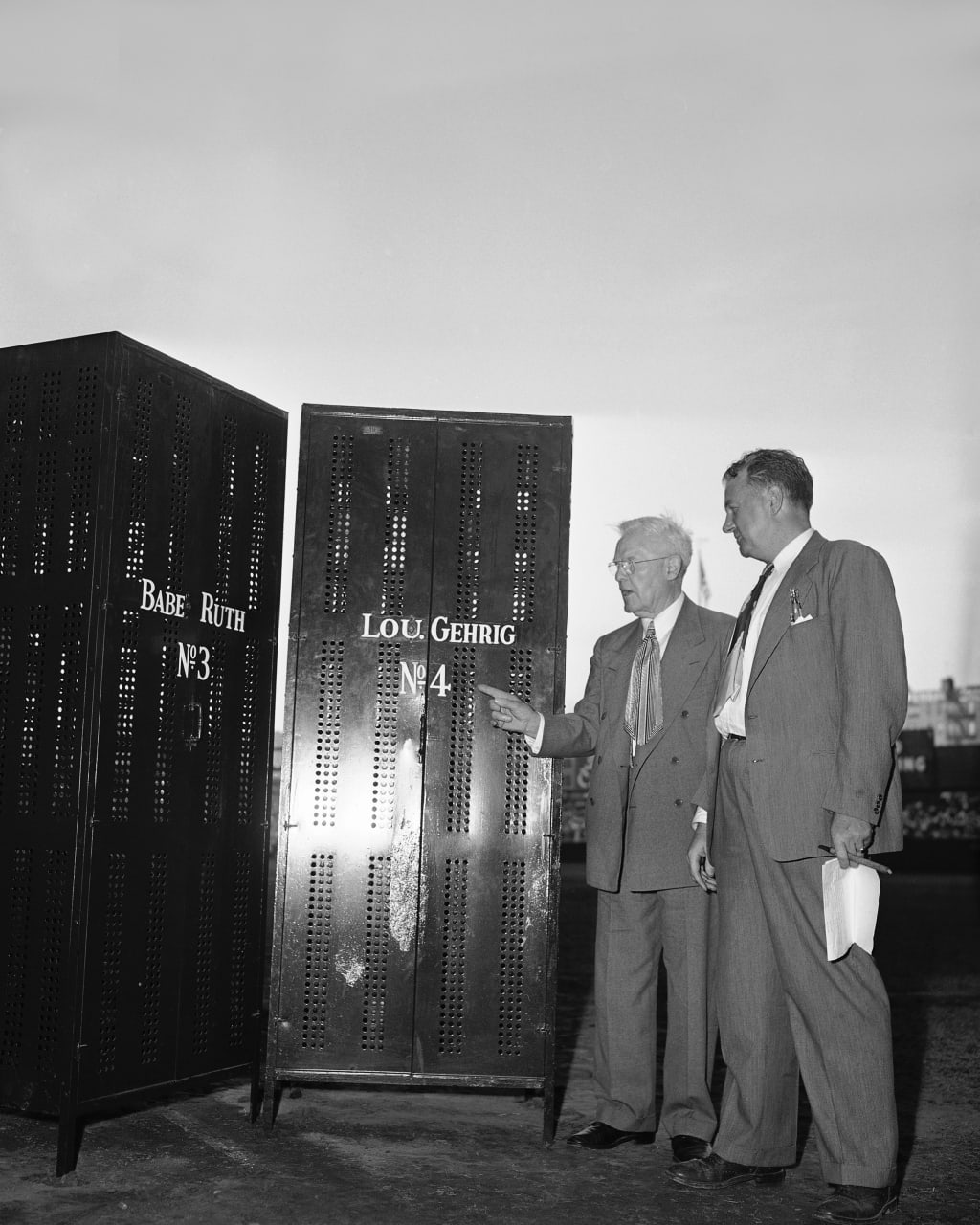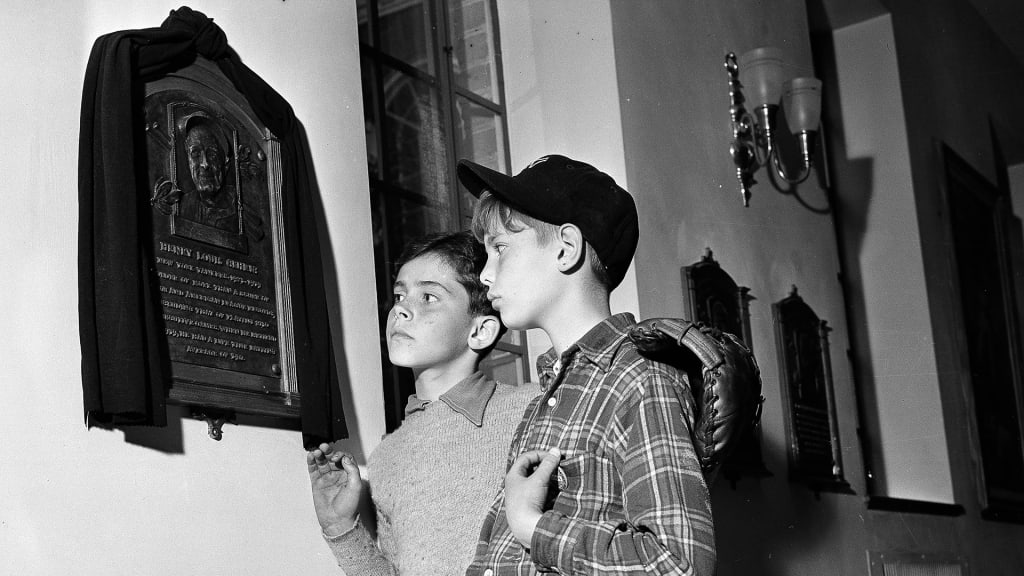
Before the plaques and the pictures, before the exhibits and the artifacts, the first feature greeting guests at the National Baseball Hall of Fame and Museum in Cooperstown, N.Y., is a grouping of statues depicting Lou Gehrig, Jackie Robinson and Roberto Clemente. Dubbed the ¡°Character and Courage¡± presentation, the statues celebrate three men who had an outsized impact not just on the sport but society, at large.
It is fitting, then, that Gehrig now joins Robinson and Clemente as the only three players to have their own specific spots on the Major League Baseball calendar. The inaugural Lou Gehrig Day will be held June 2 across MLB. Importantly, the day will raise awareness and funds in the fight against amyotrophic lateral sclerosis (ALS). But it will also be a formal continuation of the sport¡¯s celebration of the man himself.
Gehrig¡¯s place in the Hall of Fame is especially extensive. In addition to his plaque, the Hall has many mementos from Gehrig¡¯s legendary career. He and his wife, Eleanor, donated his entire collection, including his locker from Yankee Stadium (believed to be the only locker he used as a Major Leaguer), several uniform pieces, various awards and even a bracelet Gehrig made for his wife using stones and jewels from his awards. (The bracelet actually appeared in the famous 1942 film, ¡°The Pride of the Yankees.¡±)

Because Gehrig¡¯s story was about so much more than just baseball, it has been used as an example to impact future generations. The Hall of Fame has an education curriculum module titled ¡°Character Education: The Iron Horse,¡± which is delivered to students in Cooperstown and across the country virtually. The curriculum¡¯s lessons teach students the importance of leading by example, critical thinking and decision-making skills to serve their communities.
That spirit is further honored each year via the Lou Gehrig Memorial Award, which is presented annually by the Phi Delta Theta International Fraternity to the MLB player who best exemplifies Gehrig¡¯s spirit and character, on and off the field. Giants catcher Buster Posey was the award¡¯s most recent recipient, in 2020. Cal Ripken Jr. received the honor in 1992, three years before breaking Gehrig¡¯s consecutive games played streak.
But Gehrig¡¯s most important legacy is his connection to ALS. Arguably the most jarring of any of the Hall artifacts, which can be explored online, is the official letter from the Mayo Clinic that formally delivered Gehrig¡¯s terrible diagnosis -- or, as he so famously put it, his ¡°bad break.¡±

That diagnosis in 1939 had such an impact on public awareness of the disease that it has come to colloquially bear his name, and it has a particular resonance within the sport of baseball. It claimed not only Gehrig¡¯s life but that of fellow Hall of Famer Jim ¡°Catfish¡± Hunter. The late Pete Frates, a driving force behind the Ice Bucket Challenge that raised more than $100 million toward fighting ALS, was a college ballplayer.
In a sport that so often measures a man by his numbers, Gehrig¡¯s legacy outpaces even his own 1.080 OPS (third-highest all-time), his 23 grand slams, his 2,130 consecutive games played and all the other gaudy digits on his register. To try to distill Gehrig down to any one number is a fruitless task.
It's little wonder, then, that MLB opted to give him his own day.
